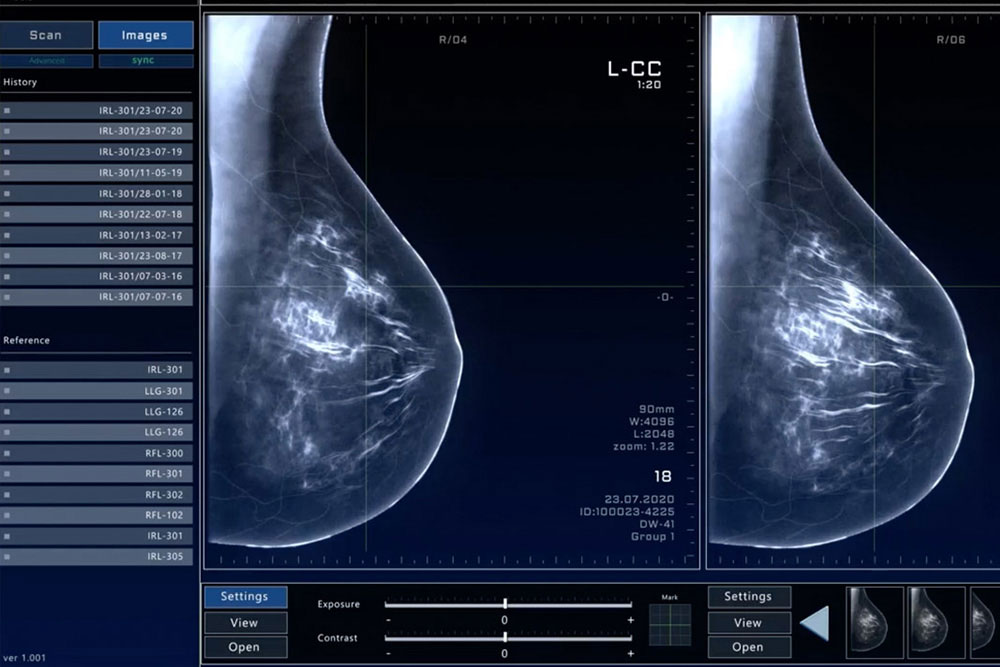
No Regrets
I've already decided to have the double mastectomy," the patient told nurse Crystal Chu with conviction.
But after 20 minutes with Chu and her gentle line of questions, even if her decision hadn't changed, her perspective had. "I'm glad to know what I know now," she told Chu.
It's the kind of encounter that Chu has had repeatedly: women at the point of medical decision-making facing difficult choices they need to make quickly that have no obvious or correct answers. Whether they've had an abnormal mammogram or have confirmed they've got cancer in one or both breasts, their path to any medical decision can feel terrifying. Uncertain. Mapless.
“Going through this guided discussion doesn’t necessarily change a patient’s mind, but it does make them feel more solid, more confident in that choice. To me, that’s really the goal: I want people to feel like they’re making a choice and they’re not going to look back and regret it.”
PhD student and oncology nurse Crystal Chu
Enter the decision aid.
Chu's decision aid—which she's currently testing in women considering contralateral prophylactic mastectomies (CPMs), when the disease is present in only one breast and patients opt to have both breasts removed—is borne out of her decade of experience as an oncology nurse. "I was seeing patients at different stages of their treatment—post-surgery, in the middle of chemo, radiation, sometimes at the end of life," said Chu, "and hearing them say, 'If I had known this, or thought about that, maybe things would've been different.' It made me dig deeper and ask, 'What can we do so they're making the best choices for care so that, when they enter survivorship, they have the best quality of life possible?'"
Women considering CPMs, Chu said, are particularly vulnerable because, while there's a dearth of scientific information to guide them, the internet is abuzz with anecdotes and stories about CPMs. Actress Angelina Jolie, who discovered she was genetically predisposed to develop breast cancer, had a highly publicized preventative double mastectomy and breast reconstruction in 2013. Since then, the so-called "Angelina Effect" has spurred many women to take surgical action both when cancer rears its ugly head and even before: between 1998 and 2011, CPMs have grown six-fold.
[VIDEO] A Decision Aid for Women Considering CPMs
For women with cancer in one breast, though, the urge to preemptively remove both breasts is a natural reaction to wrest control in a moment when it can feel like little is in their hands. Chu's decision aid offers information—the pros and cons of CPMs, their risks, and the likelihood of complications like infection, delayed treatment of the diseased breast, pain, and numbness—and a chance for the patient and their loved ones to rank goals and fears: I'm very worried about a future cancer. Symmetry is important to me. I worry how my partner will look.
The tool, said Chu, "helps patients become active participants in the decision-making process," rather than victims of it, and less prone to regret its associated mental health problems down the road. Chu is currently recruiting women for her study, which continues through early 2023. She expects to have results and a final, evidence-based decision tool for women considering CPMs by next spring.
The tool isn't only useful in cases where cancer is confirmed. For those with minimally suspicious mammograms, it tethers patients and providers to the facts. It builds an understanding of diagnostic procedures' complications and risks, including for women considering core needle biopsies and mammogram-guided breast biopsies.
"Going through this guided discussion doesn't necessarily change a patient's mind," Chu said, "but it does make them feel more solid, more confident in that choice. To me, that's really the goal: I want people to feel like they're making a choice and they're not going to look back and regret it."

